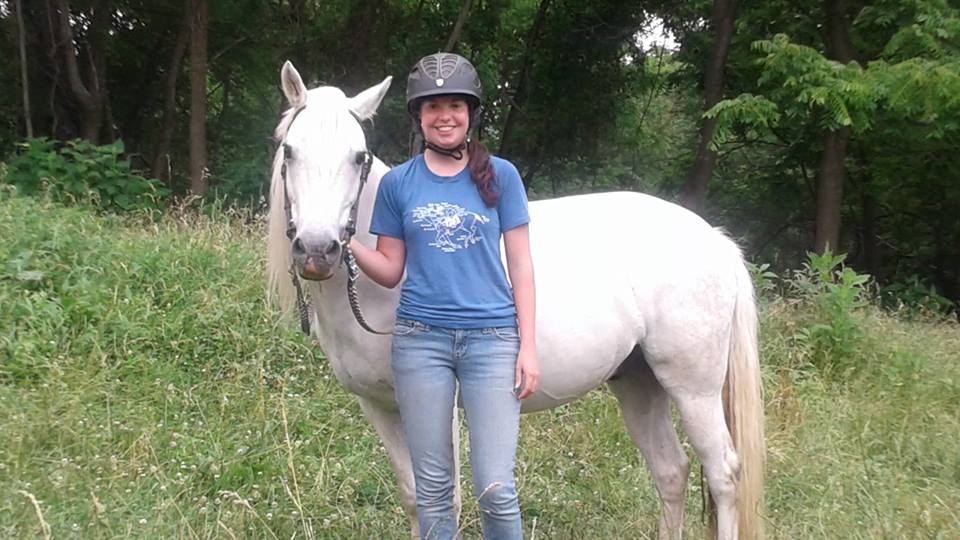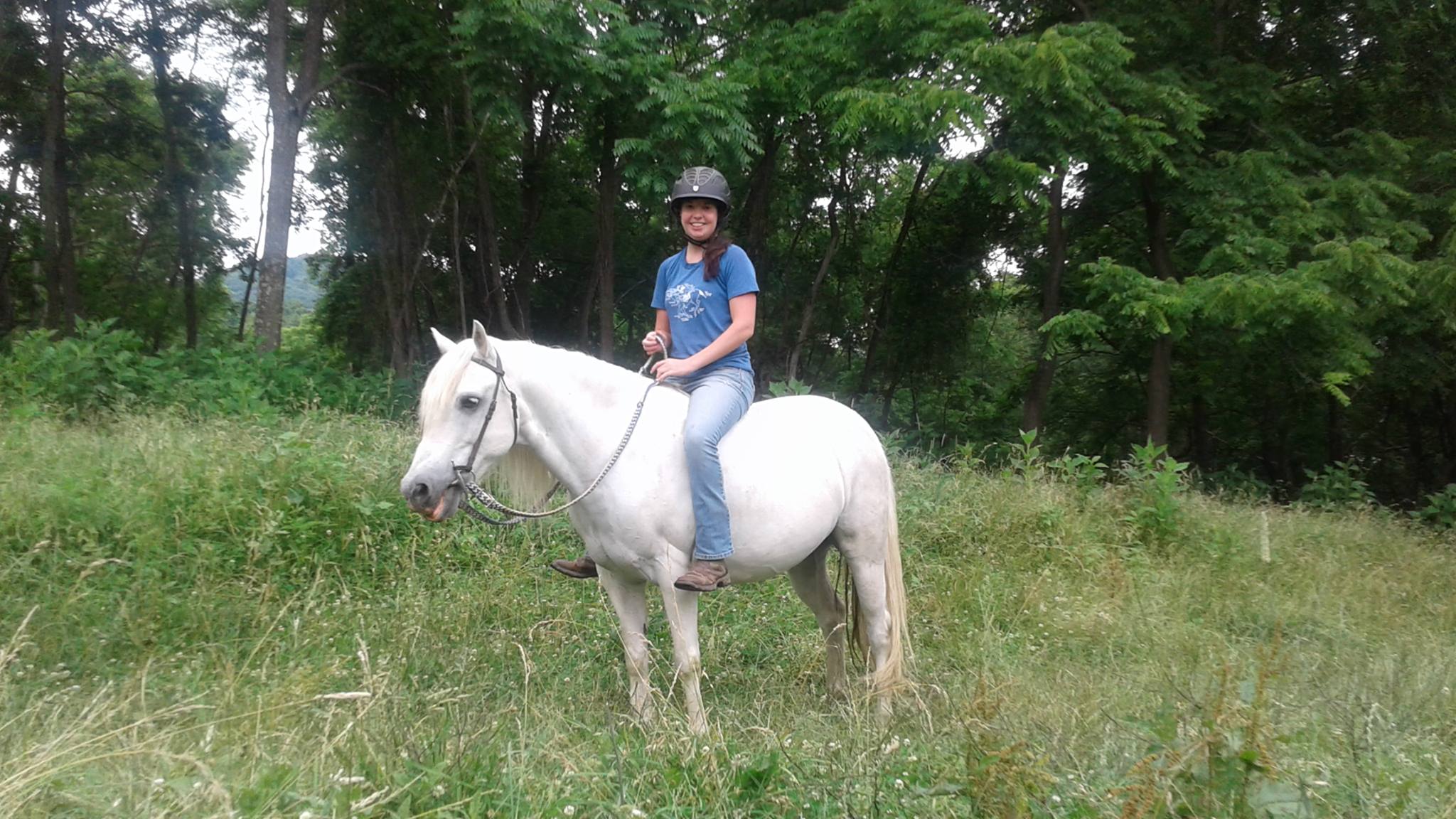Horseback riding is full of rich sounds: the steady rhythm of hoofbeats down a dusty trail. The crunch of fallen leaves and twigs underneath the horse’s hooves. The gentle nicker or excited snort that tells you exactly what your travel companion is thinking along the way.
Those little sounds are easy to miss for riders with hearing loss. Thankfully, a Cochlear Implant or Baha System can be the difference between a silent ride and one full of rich sounds.
The best part is, you don’t have to sacrifice your safety to enjoy the sounds of riding. Take Baha recipient Caroline M., for example. She is able to wear her bilateral processors with her riding helmet.
Caroline says she practically grew up on horseback.
“I think my mother had me on a horse before I could walk,” Caroline joked.
Her mother, an avid equestrian, taught Caroline and her brother how to ride on their family farm, where they had five horses and 60 acres to explore. Caroline also worked at nearby horse farms throughout high school to make a little extra money.
Caroline was born with bilateral hearing loss. She wore bone-conduction hearing aids beginning when she was 2 years old, and with a specialty headband, she was able to wear them with her riding helmet. However, when her family found out that her hearing aids were going to be discontinued, they began to look into alternative options, which is when they discovered the Baha® System.
In one of the pre-op appointments with the medical team before Caroline’s Baha surgery, her mother brought a riding helmet to the hospital to see if the implant sites could be adjusted so her daughter could wear the Bahas and the helmet at the same time.
“(My mother) told the doctor how I liked to ride, and that we wanted to see if I could have the implants at a place where I could comfortably wear the helmet,” Caroline said. She described how she put the helmet on and the doctors took measurements and drew lines where they could potentially place the Baha to accommodate the helmet. They ended up placing it slightly lower than usual.
“They were very accommodating, saying, ‘Yeah, sure, we could just lower it a little bit,’” Caroline recalled.
After the procedure in 2011, Caroline began using Baha 3 Sound Processors. In 2016, she upgraded to Baha 5 Sound Processors.
She said she enjoys wearing her processors while riding horses because it allows her to experience all of the sounds in her environment.
“It’s very peaceful to ride out and hear birds and other wildlife,” she said.
“I wanted to be able to hear my environment and the people around me, listen to the horses and their hoofbeats. I just wanted to hear everything, so being able to be safe and hear has kept me connected to my love of horseback riding.”
Her advice to other riders is to not let their worries about placement keep them from pursuing the Baha System.
“The Baha is very flexible— you can do a lot with it,” Caroline said. “Take full advantage of the technology and talk to the doctors about how to incorporate your hobbies with the Baha so you don’t have to give anything up for full hearing capabilities. It’s definitely a very viable option for equestrians.”
For more information about the Baha System and how to hear all the sounds of your environment, check out the Lifestyle section on myCochlear.

